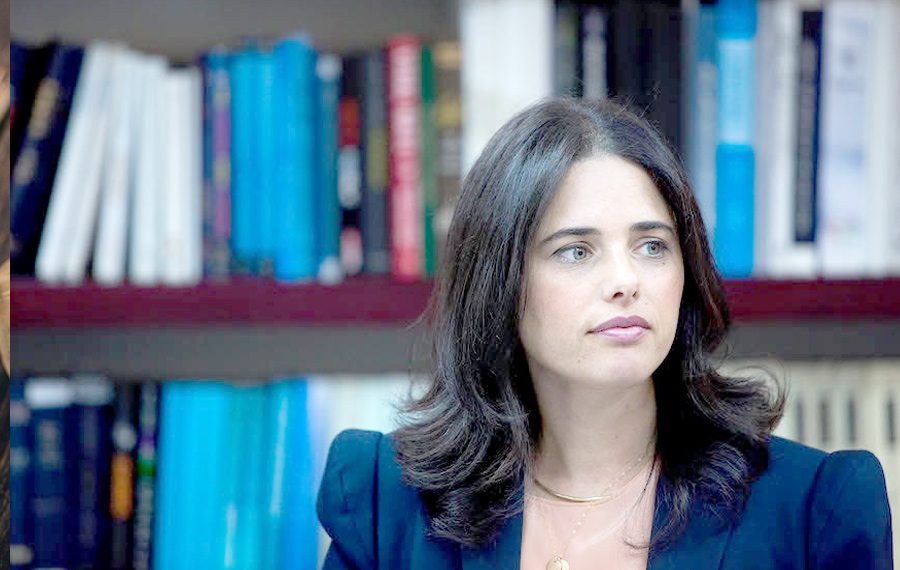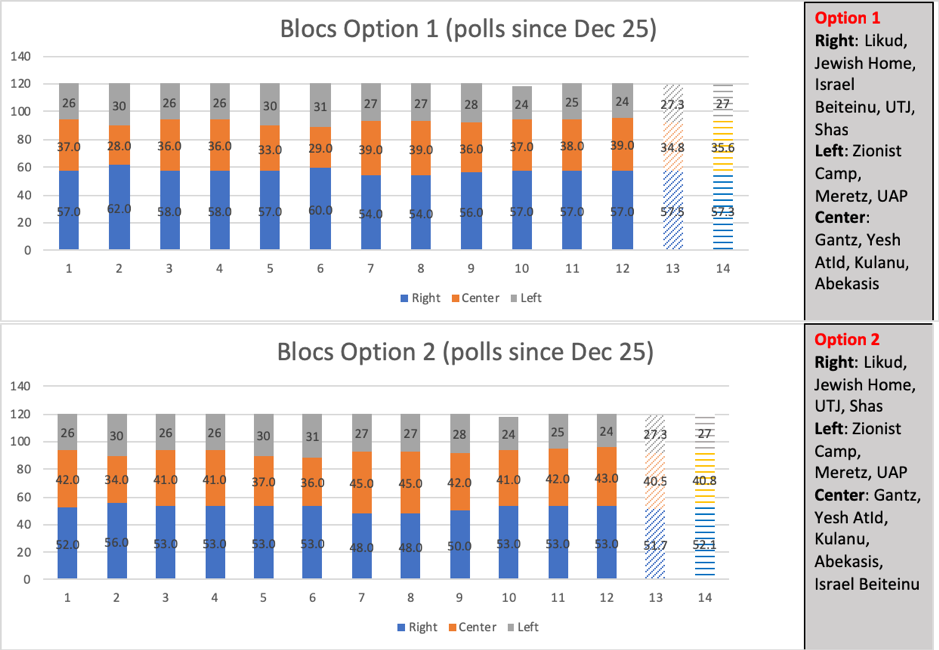
We call this format a Timesaver Guide to Israel’s Coming Elections. This will be a usual feature on Rosner’s Domain from now until April 9. We hope to make it short, factual, devoid of election hype, he-said-she-said no news, unimportant inside baseball gossip. See an Update with the newer polls from Sunday here.
Bottom Line
Israel’s political system fragments on both right and center.
Main News
Ministers Naftali Bennett and Ayelet Shaked left The Jewish Home to form the New Right party. Generals Benny Gantz and Moshe Yaalon to join forces.
Schedule
February 21: Last date to present the lists of candidates for all parties.
Developments to Watch
Political: How many voters leave The Jewish Home for the New Right. How many voters the New Right is able to get from other parties (Likud, Yesh Atid, Gantz, Shas).
Personal: Will MK Bezalel Smotrich become the new face of The Jewish Home? Who will he recruit to attract more voters? Will Tzipi Livni find a new political home (she does not seem to want to stay in the Zionist Camp – nor does Gabbai seem to want her to stay)?
Material: The growing tension around Gaza can put Bibi Netanyahu is an awkward position, and is likely to strengthen Lieberman (who left the coalition arguing that Israel’s deterrence no longer work in Gaza).
What’s the Race About
Who better represents the ideologies and interests of the center-right and right?
Possible Wild Cards:
Eruption of violence in Gaza.
A decision to indict Netanyahu.
The Polls and Their Meaning
Below are the parties gaining and losing seats according to the polls since December 25, compared to the number of seats they won in 2015 (The New Right is not yet here). Note that Likud seems very stable and that the two parties who gain most seats are new parties – the old parties either lose (Zionist Camp) or stay about the same.

The Blocs and Their Meaning
We offer two options of political blocs. As you can see, in both cases, the right-religious bloc does not have more than 60 seats and thus cannot form a coalition by itself. It will have to be joined by at least one of the centrist parties. Columns 13 and 14 are averages – 13 of all polls since January 2018, and 14 of all polls since December 25, when new election were announced. For now, what we see is stability. Parties fluctuate, but blocs remain the same. With such outcome, it is clear that Likud will form the new coalition.
See an Update with the newer polls from Sunday here.

Focus on One Party
This is what the Yesh Atid Party looks like in polls since the beginning of the year. It looked in a much better position when Gantz was not yet a part of the picture. It currently looks as just one of many second tier parties. The average for Yesh Atid in polls since December 25 is 13 seats, two more than it currently has in the Knesset.






















 More news and opinions than at a Shabbat dinner, right in your inbox.
More news and opinions than at a Shabbat dinner, right in your inbox.